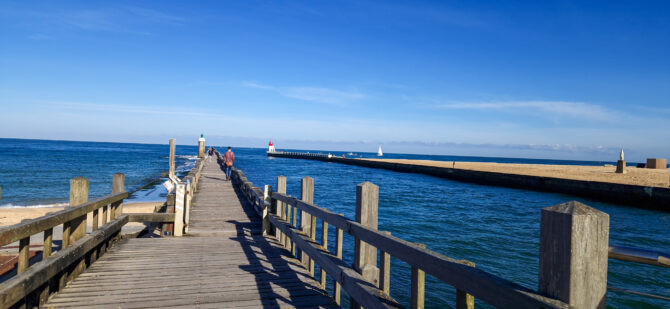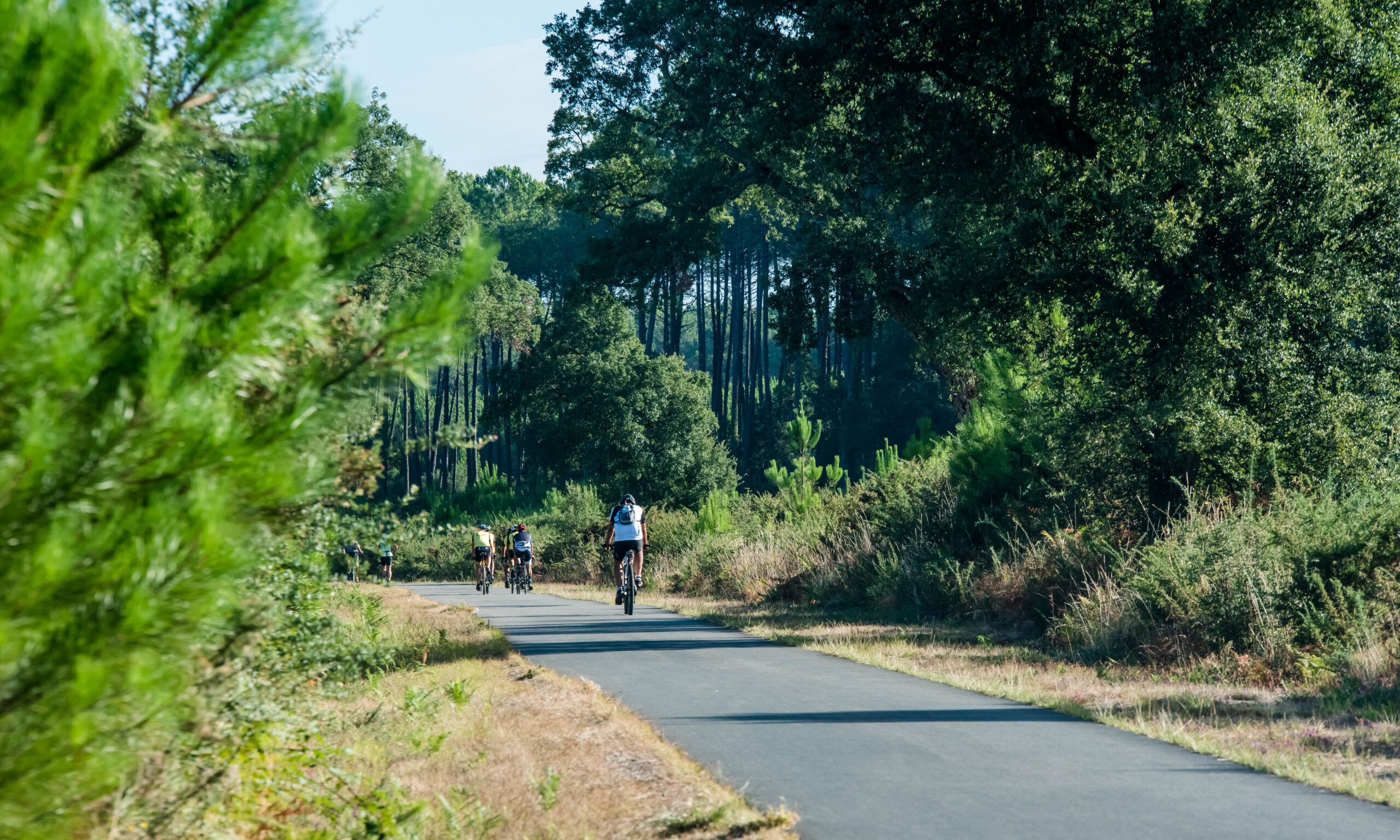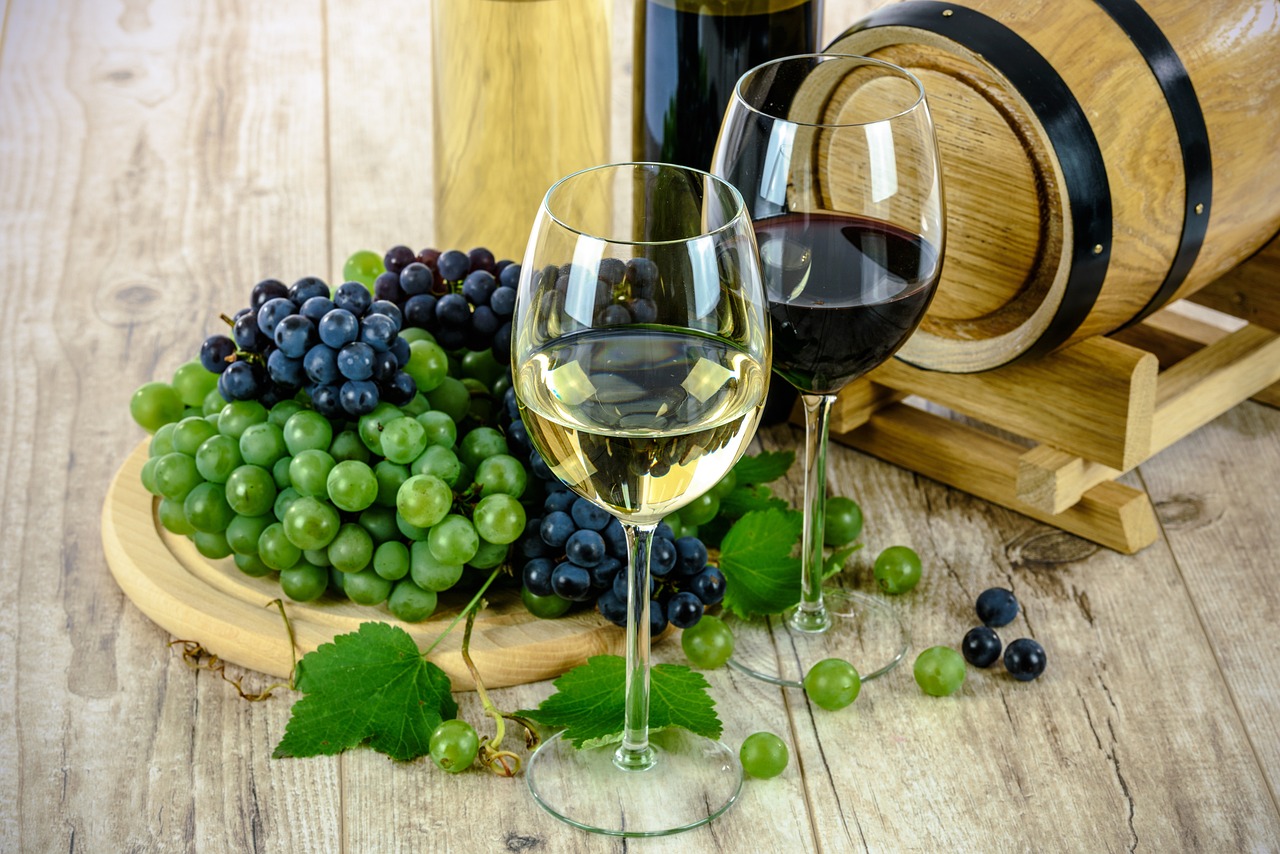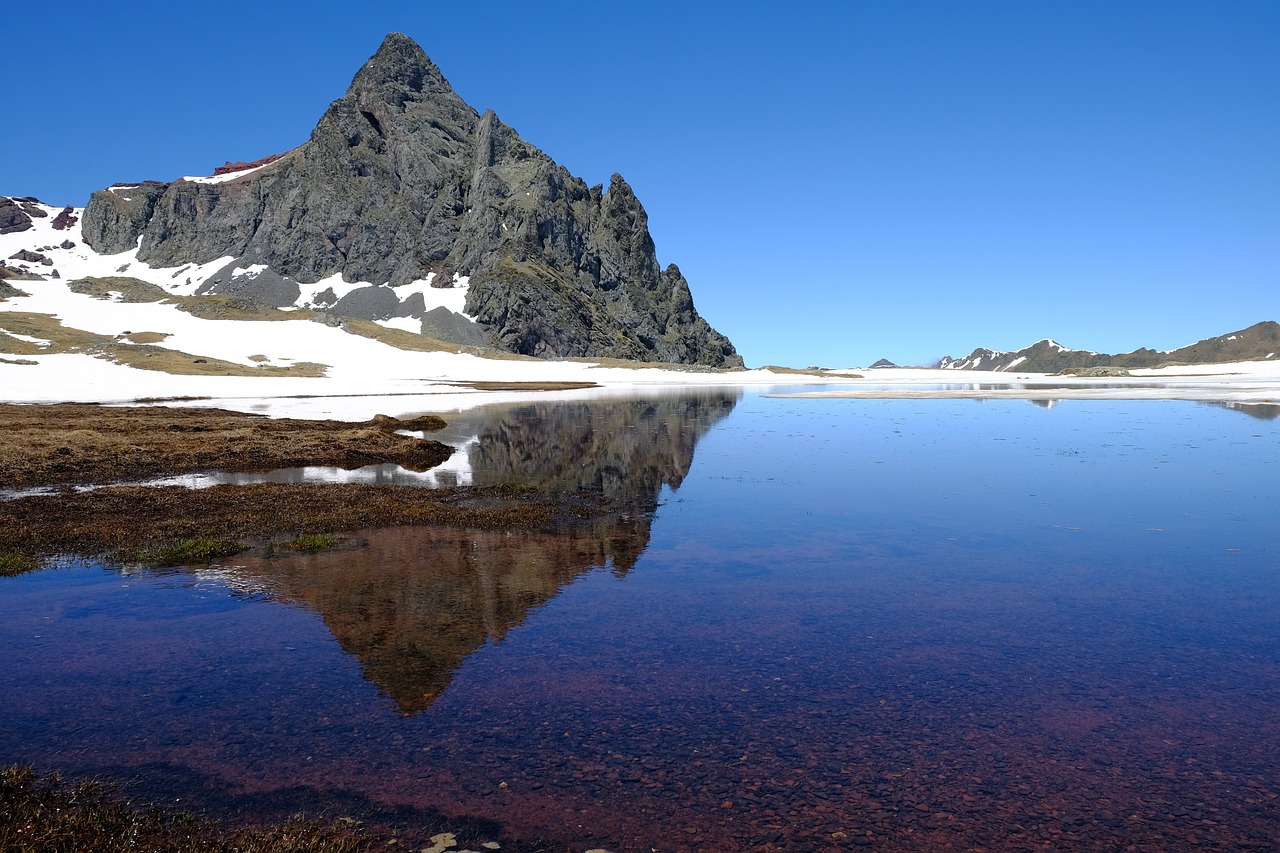Get to Know France’s West Coast: Charentes, Landes & Pays Basque
Feature


Love the sea? Ever thought of holidays or living on France’s west coast? Often overlooked in favour of its more famous Mediterranean coastline, as you’ll discover, the west coast possesses many rare gems and one or two world records. In the final article of the three-part series, Beth Haslam looks at Nouvelle Aquitaine, from Bordeaux to its border with Spain.
Read the other articles in this series:
Get to Know France’s West Coast: Your Ultimate Guide to Brittany
Get to Know France’s West Coast: Pays de La Loire & Nouvelle Aquitaine
Nouvelle Aquitaine Geography
The Nouvelle Aquitaine is the largest region in France and has twelve departments. It covers a land area comparable in size to Austria. Basically, it’s huge. Its Atlantic coastline extends for 720 kilometres (447 miles).
South of Bordeaux, the Landes de Gascogne extends to the Pyrenees foothills. It features extensive territory used for agriculture and is home to the Landes Forest. The Pyrenees mountain range characterises the extreme south of the region.
The major rivers include the Adour, Dordogne, and the Garonne, which flows northwest through Bordeaux and meets the waters of the Dordogne to become the Gironde estuary.
Nouvelle Aquitaine Weather & Climate
The climate here is essentially temperate. It enjoys approximately 2,000 to 2,200 hours of sunshine annually, similar to some Mediterranean regions. The climate information north of Bordeaux is outlined in the second article in this series. To the south, there are differences.
- The Aquitaine maritime zone includes the terrain from Charentes to Landes. Here, the mild winters and relatively hot summers are tempered by onshore breezes.
- The maritime micro-climate of the Basque Country, south of Landes, is more humid.
- The Pyrenees have a mountain climate that varies with altitude.
Nouvelle Aquitaine Nature & Outdoors
Nature lovers adore Nouvelle Aquitaine because of its diversity. The coastline can feel endless here. Dunes fringe the beaches along much of the expanse, the most famous of which is the Dune du Pilat, Europe’s highest dune. It is linked with wetlands comprising lakes and natural aquatic reserves. Further treasures dwell beneath the sea.
A few hundred metres off the coast lies the Gouf de Capbreton (Gulf of Capbreton), one of the world’s deepest underwater valleys. The Gulf is massive and similar in size to the Colorado Grand Canyon. It begins at Capbreton and the northern beach of Hossegor and meanders south for around 300 kilometres (186 miles) to Santander in Spain. Its depth reaches an incredible 4,500 metres (4,921 yards).
The upwelling of cold water into warm waters favours plankton, which makes the Gulf home to exceptional marine biodiversity. It supports numerous sedentary and migratory fish, some native to warm seas, and several marine mammals rarely present in French waters. Specimens include the bottlenose dolphin, orcas, sperm whales and giant jellyfish.
Many beaches, particularly in the south, are backed by woodland. And whilst forests feature throughout the region, perhaps the Landes Forest of primarily maritime pines is the most famous. And it has an interesting heritage.
In the nineteenth century, the engineer Jules Chambrelent was given legal permission to sow maritime pine seeds on flood plains. The pines grew quickly, which delighted Napoleon III. The emperor bought a large piece of land to do the same, and a law was passed in 1857 that required the municipalities to follow this initiative. Inevitably, the forest proliferated.
Today, the Landes Forest is the largest artificial forest in Western Europe. Ponds, peat bogs and streams significantly contribute to the varied flora and fauna. Indigenous species include badgers, wild boars, pheasants, deer, woodcock and European hares.
The Iraty Forest in the heart of the Basque country is notable for its habitat and legends. According to mythology, it is the home of the Basajaun, a yeti-type creature also known as Lord of the Forest. This mythical Basque creature was described as a fearsome, hairy giant who protected the forest.
The forest lies at 1,300-1,500 metres altitude and straddles the Basque Country, Béarn and part of the Spanish border. The 17,000 hectares of woodland (42,008 acres) is Europe’s largest beech tree forest. During the summer, cattle graze here, along with black-headed Manech sheep, from which the famous Ossau-Iraty cheese is produced. Grazing alongside cattle are herds of Pottok horses, an indigenous ancient breed, which live in semi-liberty.
The Irati forest is rich in wildlife, and it’s an ornithologist’s dream since this is one of the last strongholds for black and white-backed woodpeckers. Large birds of prey, such as the bearded vulture and golden eagle, may also be seen here.
The Ossau Valley, adjacent, is one of the three great valleys of the Béarn and runs from Pau to the border with Spain. Its exquisite landscape of glacial lakes and exceptional wildlife are a protected part of the Pyrenees National Park.
As noted below, the region supports several natural parks that preserve their environments, landscapes and unique heritages.

Landes Forest along France’s southwest coast.
Nouvelle Aquitaine Culture and Heritage
Prehistory
The region’s culture began with evidence dating to prehistory. Megaliths, dolmen and ancient sites are found throughout the area, bearing witness to ancient occupation. The following are outstanding examples of world significance.
- Lascaux in Dordogne has cave paintings created 17,000-18,000 years ago.
- Brassempouy in Landes: its Grottes du Pape is a rare site in Europe with occupation levels covering more than 30,000 years of human history.
Coastal towns
The coast is peppered with towns which developed through their dependence on maritime activities. From shipbuilding to salt, molluscs and fish farming to whaling and playing host to the rich and famous, locations such as La Rochelle, Arcachon, Capbreton and Biarritz have flourished. Inland, a different culture is present.
Wine
Viticulture is imbued in the region’s ethos and began centuries ago. The famous Bordeaux area, of particular note, is home to the world’s most extensive fine wine vineyards.
The Arts
The diversity of art is remarkable here. Nouvelle Aquitaine has many UNESCO World Heritage sites and is justifiably proud of its heritage. Throughout the year, towns such as Rochefort, Saintes, Poitiers, Cognac, Limoges, Royan, Thouars, and Châtelleraudais organise tours and events to celebrate their arts.
Religious sites
Like the rest of France, religion here is predominantly Roman Catholic. Churches and religious sites built from the early centuries to modern day, many lavish in design, others humble by contrast, are widespread.
From the Middle Ages, pilgrims have traversed Europe to the cathedral of Santiago de Compostela in Spain. It is the culmination of the pilgrimage route and the alleged burial site of the apostle St. James. The routes became known as the Ways of St James.
Pilgrims converge on the Camino Frances. Also known as The French Way, this 900-kilometre (559 miles) route starts close to the Spanish border in Saint-Jean-Pied-de-Port. The French town was founded in the 12th century after its predecessor, Saint-Jean-le-Vieux, was razed by King Richard I.
You can explore the villages, churches and other sights along the route, which has become equally popular with those wishing to experience the spiritual and physical aspects of the pilgrimage.
The Basque Country
The Basque country in the south deserves special mention because of its people’s strong cultural identity, enriched with festive and sporting traditions and local cuisine. The Basque people preserved their language, Euskera. It is claimed to be the oldest European language and is spoken by an estimated million people.
A quirky expression of the Basque people’s individuality is their much-loved game called Pelote. Also called pilota by the Basques and likened to squash, the game is played using one of a range of strange-looking rackets or one’s hand. It’s fast, furious, and very popular.
Nouvelle Aquitaine Gastronomy
Food here suits all tastes, and quality counts. Nouvelle Aquitaine has over 296 official quality products distinguished by labels or certifications: Label Rouge, Blason Prestige, and Protected Geographical Indication (AOP).
Here are some of the stars:
- Limousin beef and veal
- Charentes-Poitou butter
- Gascony farm poultry
- Marennes Oléron Oysters
- Espelette peppers
- Mirmande tomatoes
- Bayonne ham
- Ossau Iraty Agour Basque sheep’s cheese – multiple World Cheese gold medal winner
As for dish choices, it depends on what you fancy. Here are a handful of traditional dishes:
- Foie Gras with Truffles from Périgord.
- Confit de Canard – made from salt-cured duck legs cooked and preserved in duck fat
- Garbure Landaise is a sustaining vegetable and meat soup from Landes that has many variations.
- Salade Landaise – a hearty salad with duck gizzards, aiguillettes, dried duck breast, salad, tomatoes, cucumber, corn, and apples or asparagus.
- Piperade – a Basque country classic stew with peppers, tomatoes, and onions slow-cooked in olive oil.
But if seafood is more to your taste, you’re in luck. The Atlantic waters are richly stocked with sea life. For many, though, it’s pretty hard to beat a simple platter of fruits de mer, sardines grilles or moules – with frites, of course!
With farming and mariner stomachs to fill, you’ll imagine that the desserts and sweetmeats are among France’s best. Here are some of the most popular:
- Dacquoise – from Dax, traditionally made with almond or hazelnut meringue sponge cake separated with layers of whipped cream or buttercream.
- Canelé – that yummy little cake originating in Bordeaux with a rich, custardy interior and a thin, caramelised exterior,
- Tourteau Fromagé – a traditional pastry from Poitou made with fresh goat cheese.
- Le Gâteau aux Noix – a Périgord walnut cake made with walnuts, sugar, salt, butter, eggs and flour, topped with a mixture of chocolate and butter.
- La Tourtière – a cake from Gascony made with super-thin layers of buttered and sweetened pastry, apples fried in butter, with added Armagnac and a sprinkle of brown sugar.
As for wines, the options are almost endless. There are multiple wines from Bordeaux, as well as wines from the Basque country and Lot-et-Garonne. Nouvelle Aquitaine is also the home of Cognac and Armagnac – commonly considered the best brandies in the world.

Nouvelle Aquitaine Things to Do
There’s something for everyone in Nouvelle Aquitaine, no more so than in the region’s capital, Bordeaux.
Bordeaux is a magnificent city renowned for its classical and neoclassical architecture. It was because of its fine heritage that, in 2007, it was added to UNESCO’s World Heritage List. Bordeaux has over 350 listed monuments, churches, museums, art galleries, parks and theatres, making it an immensely popular destination.
Biking and Hiking
Cycling and hiking are popular here. There are thousands of miles of hiking trails to traverse, from the sandy stretches, vineyards, the forested and farmed interior to the majestic mountains.
Long-distance cycling is popular here; two official routes pass through the region. EuroVelo 1, also called La Vélodyssée, follows the Atlantic coast for more than 1250 km (782 miles). EuroVelo 3, also called La Scandibérique, connects from Bordeaux and follows south to Saint-Jean-Pied-de-Port. Its total length is 1700 km (1,056 miles). These routes can also be walked.
As mentioned above, the Camino Way passing through the region is particularly interesting for religious and secular reasons.
Nature
Observe wildlife, hike, bike, ride a horse or steer a barge; the five regional nature parks, with their preserved landscapes and rich heritages, offer extensive themed activities.
- Landes de Gascogne Regional Natural Park is a vast maritime forest supporting a network of interlacing watercourses.
- Marais Poitevin Regional Natural Park is a wetland on the coast with diverse environments and unique landscapes.
- Périgord-Limousin Regional Natural Park extends over an extensive rural farmed area.
- Millevaches en Limousin Regional Natural Park is distinguished by its moors, peat bogs, woodland landscapes, and famous Vassivière lake—one of the largest man-made lakes in France, covering 1000 hectares (2471 acres).
- Médoc Regional Natural Park, with its large freshwater lakes, combines wine-growing agricultural areas with marshland and forests.
Mountains
The Pyrenees Mountains are a year-round, much-loved location. Walking and enjoying the spectacular landscapes and nature during the summer and a playground for snow lovers in the winter. The resort villages are well equipped with facilities, including Nordic baths, spas and gourmet specialities.
Arts
A great way to learn more about an area’s culture is by visiting the region’s museums, and you’ll find many here, with a multiplicity of themes, including:
- Lascaux IV in Montignac is the only replica of the original cave.
- The extraordinary Mer Marine Museum in Bordeaux
- Villa Arnaga in Cambo-Les-Bains, home of Edmond Rostand, one of the greatest French poets and dramatists.
- The Comic Strip Museum of Fine Arts, Angoulême.
- The Musée National Adrien Dubouché in Limoges houses the world’s richest public collection of Limoges porcelain.
Traditional Crafts
Handmade the old-fashioned way still exists in Nouvelle Aquitaine. Watching an artisan at work is fascinating. That’s possible here with crafts such as:
- Tapestry stitching in Aubusson
- Master stained glass working in Limoges,
- Traditional goat cheese making in Poitou,
- Thatch roofing in Corrèze,
- Tanning leather in Saint-Junien.
- Porcelain production in Limoges.
Beach and Watersports
From beachcombing to locations of special interest, fishing and every water sport you can imagine, the options are endless. Here are some of the highlights:
- Dune du Pilat, at the head of Arcachon Bay, is a protected natural area of 6,875 hectares (16,988 acres) and supports a range of activities.
- Fishing. The Gulf of Capbreton, home to an extensive range of sea life, is an ideal location for anglers, both on and offshore, and includes big game fishing for species such as bluefin tuna, albacore tuna, and marlin.
- Surfing is exceptional here. The Gulf of Capbreton contributes to the formation of a famous wave called La Nord, which rolls onto the central beach of Hossegor. World-renowned by professional surfers, this often monstrous wave is surfed by professionals during the World Tour Surfing Championships.
- Lighthouses. Twenty-three lighthouses line the coast, eleven of which are open to the public. Touring one of these is a great way to learn about the region’s maritime heritage. Here are two of the most celebrated.
- Also called the ‘Versailles of the seas’, the Cordouan lighthouse has been a UNESCO World Heritage Site since 2021. Built in 1611, it is one of the oldest isolated lighthouses at sea and is still in operation.
- Biarritz lighthouse, standing 73 metres high, dominates Cape Hainsart and marks the boundary between the Landes and Basque coasts.
- The Courant d’Huchet is a 10 km (6 miles) watercourse rich in history and habitats for fauna and flora that flows between the Léon pond and the Atlantic Ocean. Workshops, guided tours and trips in a flat-bottomed boat are available.
Whilst the shores offer endless options to expend energy, many go to relax on the pristine beaches with a good book, snooze and watch world-class sunsets—a very sensible choice.
Vineyards
The region is an oenophile’s dream. Bespoke wine routes take enthusiasts through some of the most beautiful landscapes and villages in the area. Here are some examples:
- Bergerac and Duras vineyards
- The wine routes of Bordeaux (of which several exist)
- The Cognac Vineyards
- The Isle of Oléron vineyards
- Jurançon Vineyards, Bearn
- Irouléguy vineyards in the Basque country
For those with an eye on ecology, it’s possible to visit and stay at vineyards with environmentally friendly practices.
The Bordeaux vineyard terrains include 6,000 chateaux, historic villages, medieval cities, archaeological sites and ancient Roman churches.
Chateaux
The region has witnessed countless conflicts over the centuries, which inevitably led to the construction of many castles and fortifications. Here are some of the most noteworthy:
- Chateaux de Beynac in Perigord was built in the 12th It is a massive feudal lookout that has been visited through the years by Richard the Lionheart, Eleanor of Aquitaine, and Simon de Montfort.
- Chateaux de Commarque in Eyzies was initially built in the 12th Its splendid defences overlook the Vézère valley.
- Chateaux de Bonaguil in Fumel was built in the 13th century and was a stronghold of Philip III of France. The castle was later extensively modified by Bérenger de Roquefeuil (1448-1530) and is considered one of the most impressive in the country.
- Chateaux de Roquetaillade in Mazères stands on a rocky spur. Beneath are caves inhabited by man since prehistoric times. Charlemagne is reputed to have gathered an army here in the 8th century and built a wooden castle. The castle was eventually reconstructed with stone.
- Chateaux Royal de Cazaneuve near Bordeaux was originally built in the 13th A royal castle belonging to Henri IV, it became home to Queen Margot. The fully furnished chateaux houses medieval cellars stocked with prestigious Bordeaux wines alongside troglodyte caves.
Amusement and Leisure Adventures
Family fun seekers enjoy a range of themed leisure parks, including these stars:
- Vallée des Singes near Poitiers, where more than 450 monkeys roam freely.
- Parc Zoo du Reynou near Limoges is dedicated to animal and plant biodiversity.
- Labyrinthe de l’Ermite in Domme is a huge corn plant maze. Explorers are invited to find the last hermit in the maze’s heart.
- Aquarium La Rochelle has 82 aquariums and over 600 species.
- Tèrra Aventura is a family game similar to a treasure hunt. It combines outdoor walking and discovery of the region’s heritage and natural riches. The area has more than 400 courses.
- Futuroscope and Aquascope near Poitiers is a spectacular theme park based on multimedia. Several of its attractions are unique. Aquascope is a new 6,000m² (7176 square yards) indoor water park with the first underwater cinema in Europe.
Festivals
This region loves to celebrate its local heroes, from food celebrations such as the Agen Prune Festival and Mirmande with its Tomato Festival to the Squid Festival in Capbreton. Espelette chillies are the stars of the Basque country, a gourmet event which attracts over 20,000 visitors.
Movie fans love the International Surf Film Festival in Anglet, and classical music lovers adore the classical music Violon sur le Sable festival in Royan. Theatre lovers flock to Collonges-la-Rouge for open-air theatre, and rock and pop lovers gather at Garorock to party in Marmande and the Francofolies in La Rochelle. Angouleme International Comics Festival attracts lovers of the genre. The list goes on and on. To find out what’s on when you visit, it’s best to check online for details.

The Pyrenees mountains, southern France.
Why buy in Nouvelle Aquitaine?
Whether living or taking a holiday, Nouvelle Aquitaine is large and diverse enough to offer something for everyone. Getting where you need to be is easy as travel links are plentiful.
Access & public transport
Train
The TGV (high-speed train network) serves the region, connecting most major towns and cities. Transfer time from London to Bordeaux with the Eurostar and TGV is 6h15.
Plane
There are nine airports spread across the region.
Road
The road network is comprehensive. Autoroutes provide access across the region, including the A10 Paris–Spain via Bordeaux and the A62 connecting Bordeaux to Toulouse.
Accessibility for Disabled Persons
The Tourism and Disability State label offers people with disabilities the opportunity to benefit from an adapted tourist offer such as a stay in a hotel, a visit to a museum or the practice of a sporting activity. It focuses on those with hearing, mental, motor and visual disabilities.
More than 1,300 tourist sites have received the Tourisme & Handicap tag and are identifiable by the logo at the entrance of their sites. This is their guarantee of an efficient and adapted service.
Industry
Industry is thriving in Nouvelle Aquitaine across several sectors:
- Agriculture – a significant agri-food industry exists with several specialisations: large-scale crops in Aquitaine and Poitou-Charentes, viticulture-viniculture with the Bordeaux vineyards and Cognac, livestock farming (meat and milk) in Limousin and the Pyrenees-Atlantiques.
- Aerospace and defence are strongly established in the greater south-west and supported by the Aerospace Valley cluster.
- Nouvelle Aquitaine is the leading region in metropolitan France for wooded areas and enjoys a thriving timber industry.
- Through the Energies Stockage cluster, the region is well positioned in the energy sector.
- The Bordeaux metropolitan area benefits from the French Tech label, which promotes ecosystems beneficial to the development of start-ups.
Living in the region
House prices are reasonable and comparatively lower than those on the Mediterranean coast. As you would expect, the area benefits from the French comprehensive health and education systems, and there are several international schools in the region.
Civic life is vibrant and varied. From the magnificent Bordeaux to chic Biarritz and Limoges with its flair for the arts, this region is full of micro-cultures and character. For those seeking a quieter lifestyle, there’s plenty of choice. Within the glorious countryside and close to the sea, the region has twenty-eight listed Plus Beaux Villages de France. They’re as delightful to live in as they are to visit.
Holidays and Leisure
As outlined above, organised leisure activities are available to suit all tastes, but if you prefer exploring on your own, the travel networks make that easy. On the other hand, if you fancy some R&R, you’re in luck. Nouvelle Aquitaine is a centre for thalassotherapy and wellness clinics.
With so many economic and leisure opportunities afforded to residents and holidaymakers, there’s little wonder that Nouvelle Aquitaine attracts 27 million tourists annually, but don’t worry, it isn’t overcrowded. This is the region where you can enjoy solitude or join others. The choice is absolutely yours.
Beth Haslam August, 2024
[The author’s information in this article is given in good faith based on their experience and the supplementary website material gathered during the research process.]
Lead photo credit : Capbreton in the Landes department of southwest France
Share to: Facebook Twitter LinkedIn Email
By Beth Haslam
Leave a reply
Your email address will not be published. Required fields are marked *



